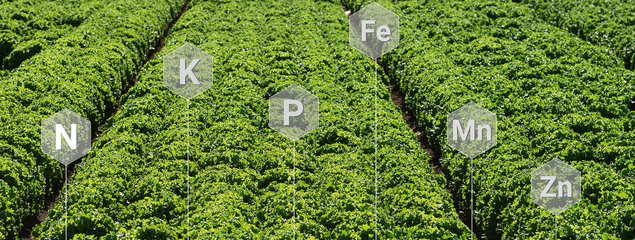
Improve Plant Nutrition
Fertilizer Guidelines for Vegetable Crops in Arizona
Crop Fertilizer Guidelines (3)
Chile Peppers and Jalapenos (3.13)
There are approximately 6,000 acres of hot peppers produced in Arizona, including jalapenos in Central Arizona (Figure 3-13-1) and New Mexico type peppers at higher altitudes in southeastern Arizona (Figure 3-13-2). Seasonal nitrogen (N) accumulation by peppers is approximately 250 lbs N/acre and amounts of N in the harvested pods is approximately 160 lbs N/acre (90).
Pre-plant N applications should be based on a pre-plant nitrate-N test and recommended rates will vary from 10-40 lbs/acre depending on soil test levels and rates of MAP applied as a pre-plant P fertilizer (Section 2.1). The N can be applied in a blend with the pre-plant phosphorus (P) fertilizer.
In furrow irrigated systems, the N rate to be applied at side dress should be based on a pre-side dress nitrate-N test. The required application rate depends on the difference between the soil test level and the minimum required threshold of 30 ppm. Approximately 4 lbs of N/acre needs to be added to increase the soil test nitrate-N by 1 ppm. Fertigation in furrow water later in the season may be needed if soil nitrate-N levels fall below 20 ppm before full bloom.
Increasingly, chile peppers are also produced under drip irrigation or linear move or pivot sprinkler systems. These systems allow for frequent split fertigation opportunities and N guidelines for these practices are addressed in Section 4.4. Some growers remain interested in using in-season plant tissue monitoring in fertigation systems and Doerge et al. (7) did not provide in-season plant N monitoring criteria (Section 4.1) for chile peppers. For convenience, we reproduced those provided in another source (Table 3-13-1), but preliminary evaluations in Arizona do not show consistent results using this approach (49).
Peppers will show a response to phosphorus (P) fertilizer up to 20 ppm Olsen P (Table 3-13-2). Because hot peppers in Arizona are often planted into cold soils in March, they will respond to a starter P fertilizer at Olsen P levels greater than 20 ppm.
Recent work by Silvertooth (49) in southeastern Arizona and southwestern New Mexico has shown chile peppers respond to potassium (K) fertilizers on soils with a low cation exchange capacity (CEC). It seems the K release from such soils does not keep up with crop demand by the crops during peak growth periods. Based on this and other work (44), a provisional threshold of 200 ppm AA K has been set for chile pepper. On low CEC soils, peppers may also benefit from higher rates of K than would normally be required, or by split application. Leaf tissue K concentration greater than 3.5% generally indicates K sufficiency (Section 4.3).
Based on recent observations that some vegetable crops have shown response to zinc (Zn) fertilization in Arizona, soil DTPA Zn levels should be monitored (Section 2.5). Furthermore, leaf tissue Zn levels below 30 ppm might be cause for concern (Section 4.3).
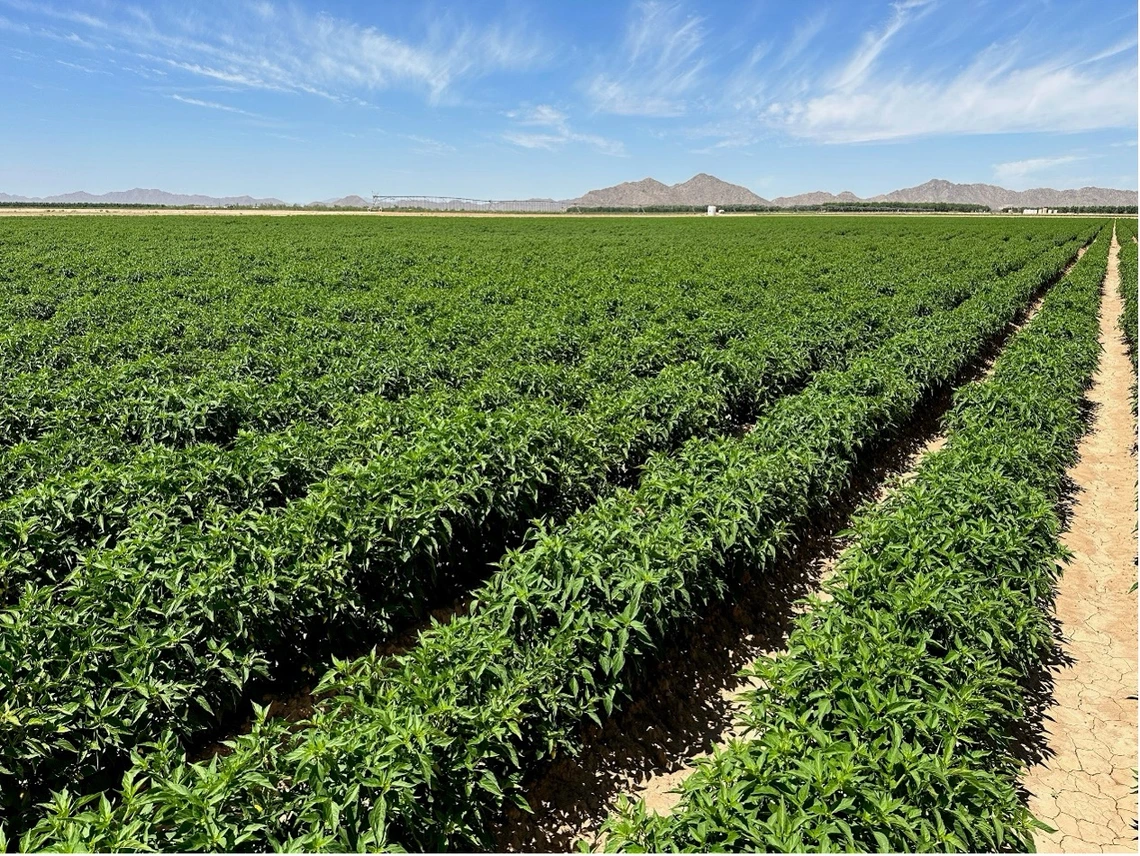
Figure 3-13-1
Jalapeno peppers irrigated by drip irrigation on a farm near Maricopa, Arizona.
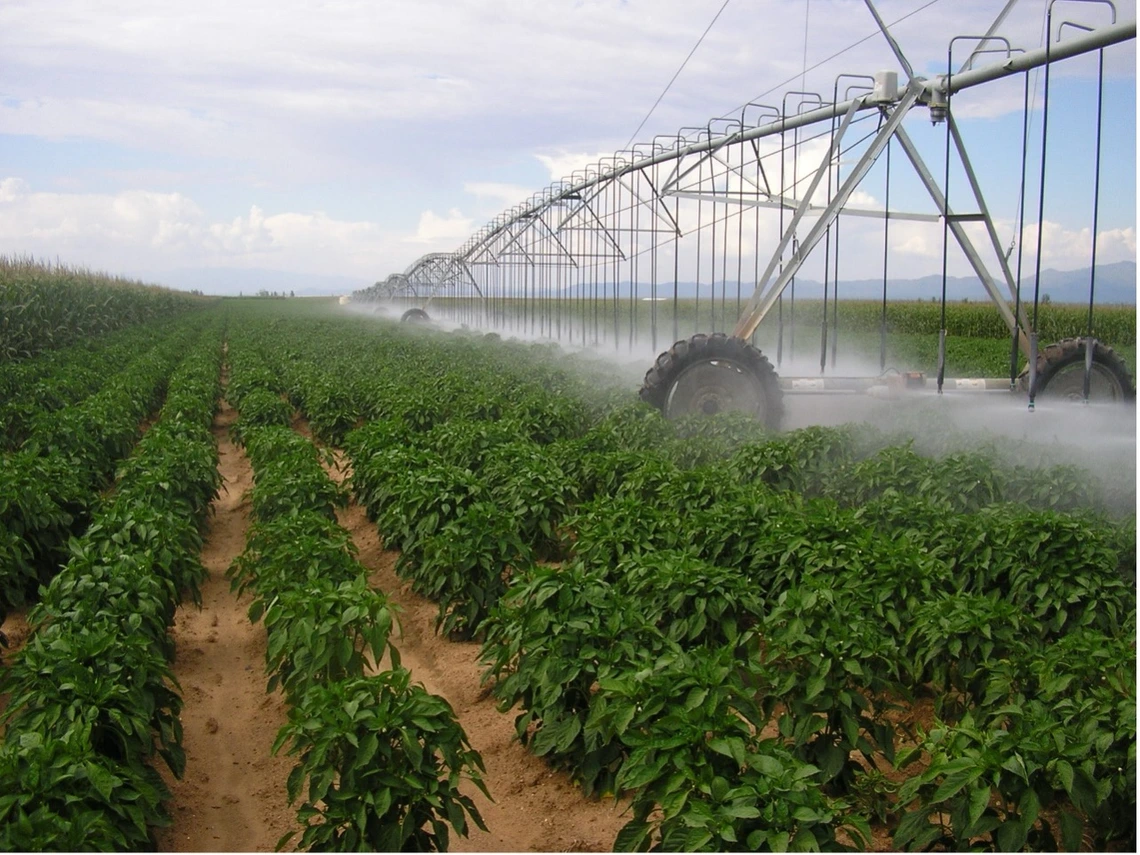
Figure 3-13-1
New Mexico type chile peppers irrigated by center pivot near Wilcox, Arizona.
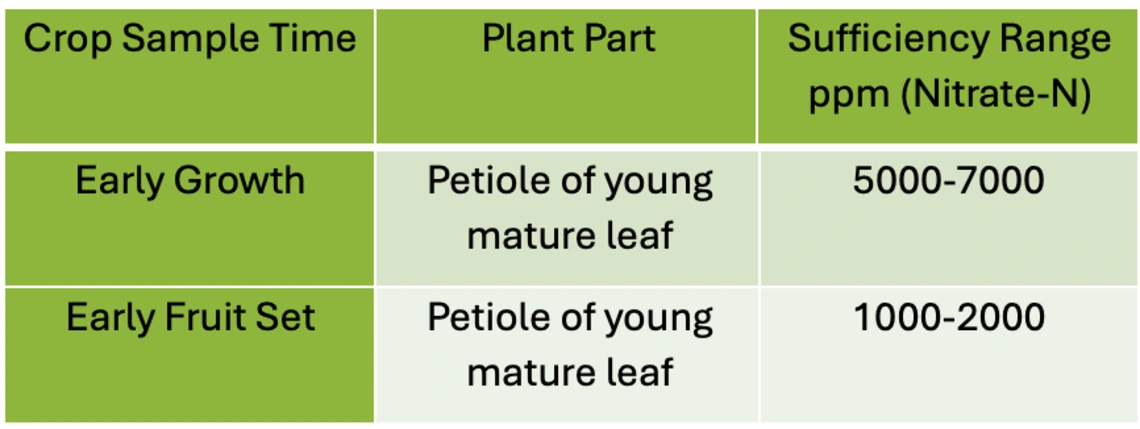
Table 3-13-1
Values for in-season plant nitrate monitoring in chile pepper
Adopted from (91)
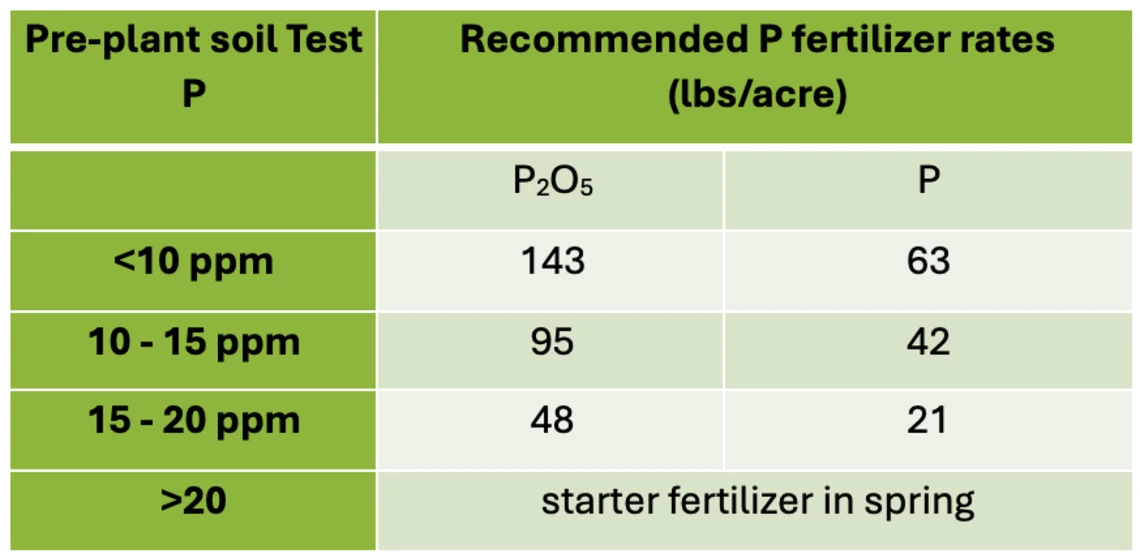
Table 3-13-2
Chile pepper P fertilizer guidelines by pre-plant Olsen P soil test.

